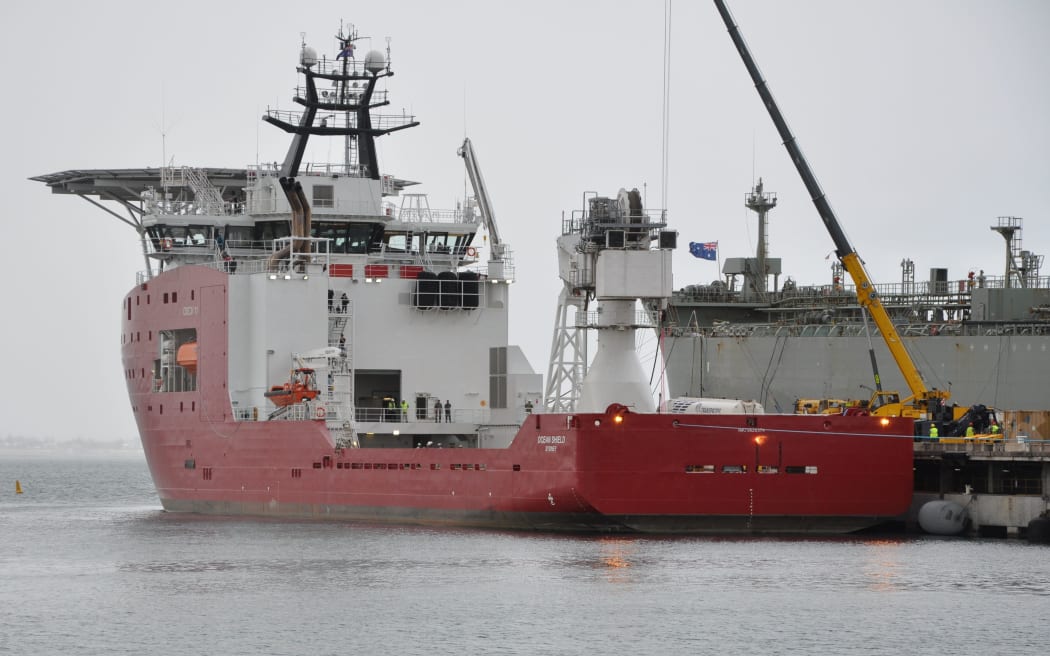An Australian Navy ship has hugely narrowed the search zone for a missing Malaysian plane after picking up two underwater signals of the type transmitted by aircraft black boxes.
It could be the breakthrough investigators are hoping for after the month-long search, but it may take days for officials to confirm that the signals are from the Malaysian Airlines jet.
The Boeing 777 with 239 passengers and crew vanished on 8 March en route from Kuala Lumpur to Beijing. Investigators believe flight MH370 crashed somewhere in the southern Indian Ocean, although no confirmed debris has yet been found.

Australian Defence vessel the Ocean Shield. Photo: AAP

Angus Houston, chief coordinator of the Joint Agency Coordination Centre. Photo: AAP
Dozens of ships and planes have joined the search, with the operation moving into its most intensive phase before batteries on the data recorders, or black boxes, fade.
Australian vessel the Ocean Shield was able to record pulsed signals for several hours and then pick them up again for a few minutes. It used a towed American pinger locator to find two separate signals about 2km apart.
The head of the search, retired Air Chief Marshal Angus Houston, told a news conference in Perth on Monday that the ship had picked up signals consistent with the black box flight recorder on two occasions - once for about two hours and 20 minutes, and a second time for about 13 minutes, the BBC reports.
Air Chief Marshall Houston said it is the best information of the search so far, but warned it could take several days to confirm whether the signals were indeed from the missing jet in water 4500 metres deep.
"Significantly, this would be consistent with transmissions from both the flight data recorder and the cockpit voice recorder. Clearly, this is a most promising lead and ... in the search so far it's probably the best information we have had."
Air Chief Marshall Houston said the Ocean Shield is staying in the immediate area where the signals were picked up and is continuing to try to regain contact using the towed pinger locator.
He said while he was much more optimistic about finding the plane than a week ago, there is still difficult, painstaking work to confirm that is where the aircraft entered the Indian Ocean.
If the signals can be narrowed further, an autonomous underwater vehicle called a Bluefin 21 would be sent to attempt to locate wreckage on the sea floor to verify the signals.
Meanwhile, British ship HMS Echo with sophisticated detection equipment has also arrived in an area where a Chinese vessel searching for the missing plane has twice detected a pulse signal.
A New Zealand Air Force Orion was rejoining the search on Monday after two rest days.

